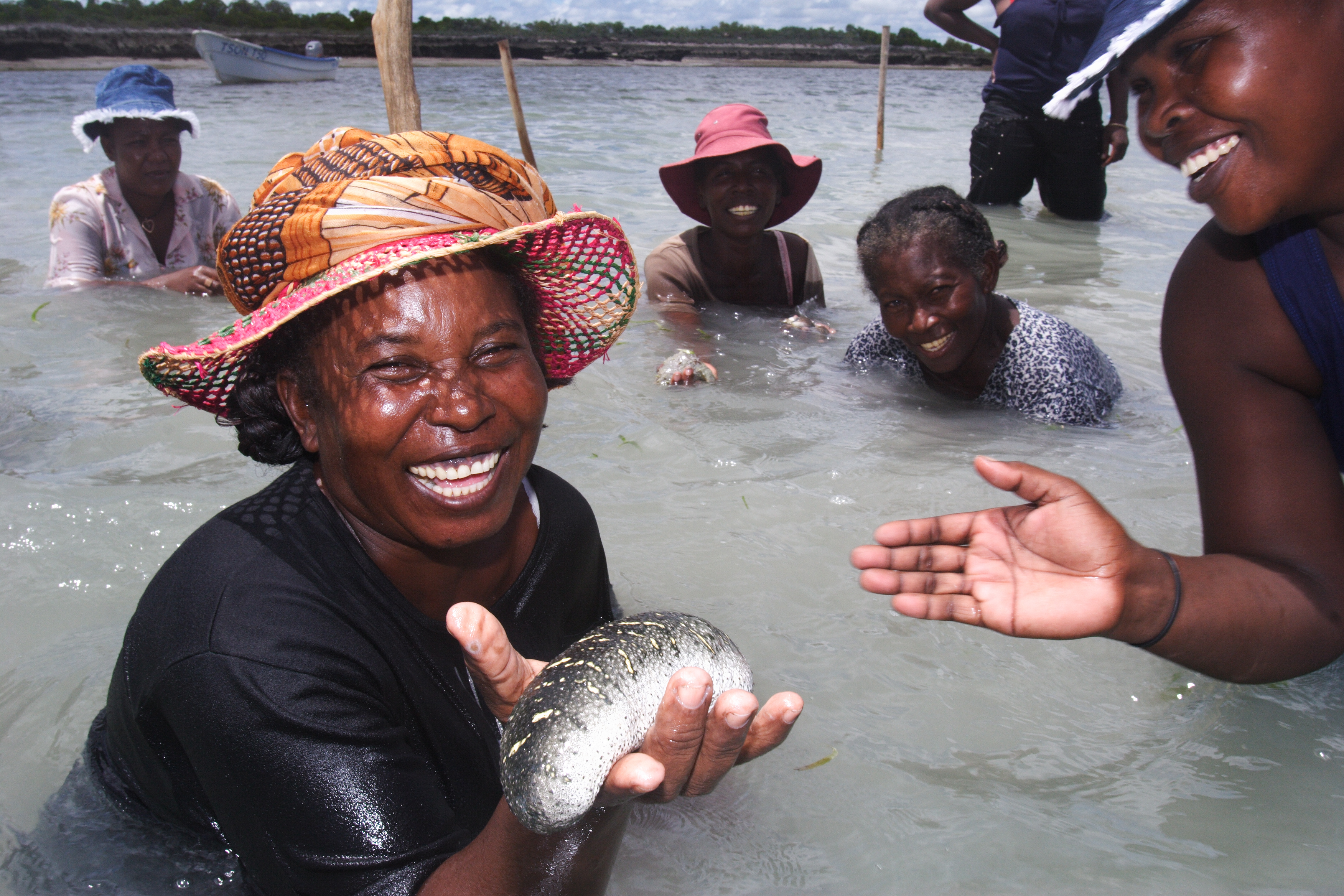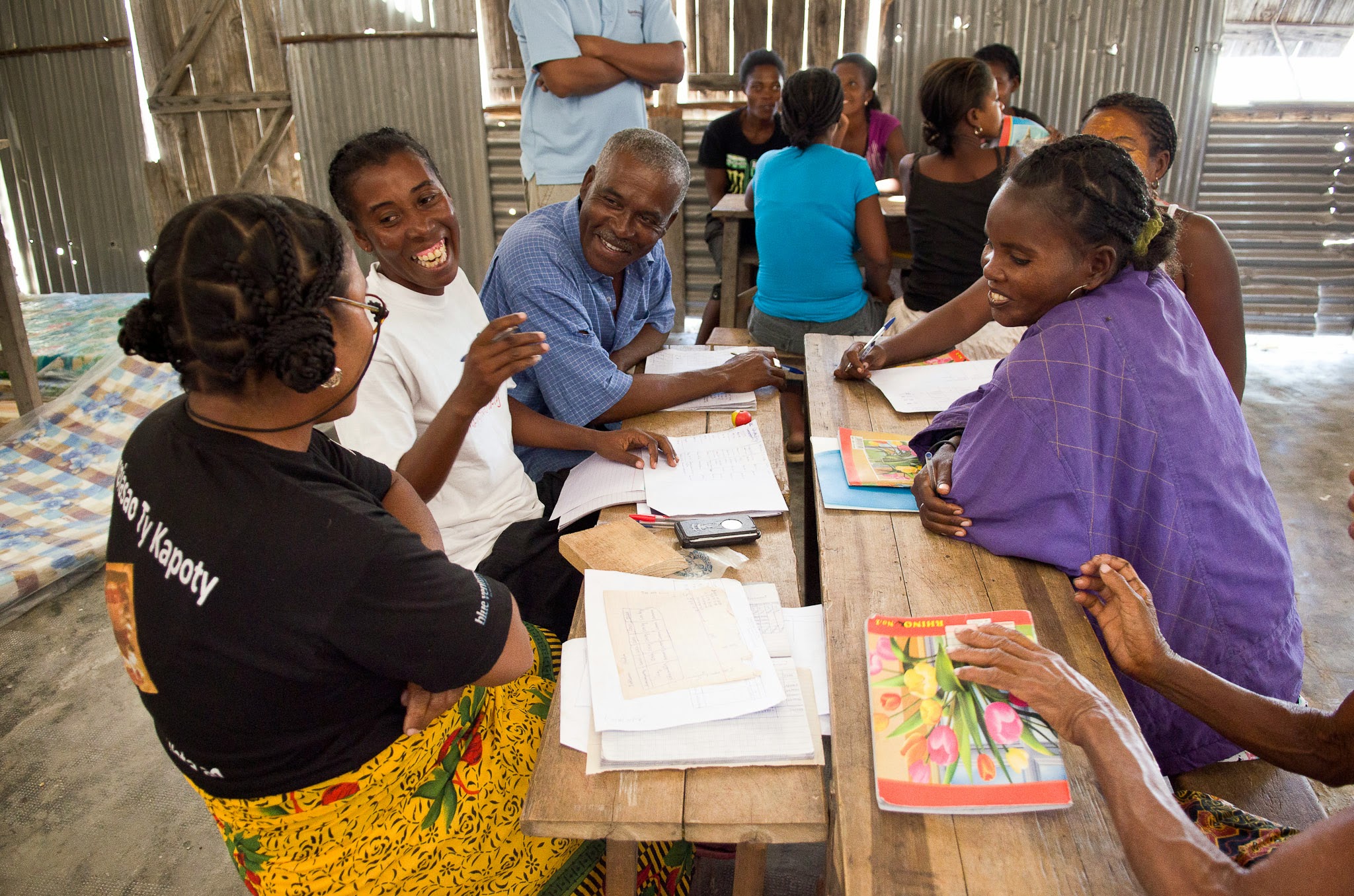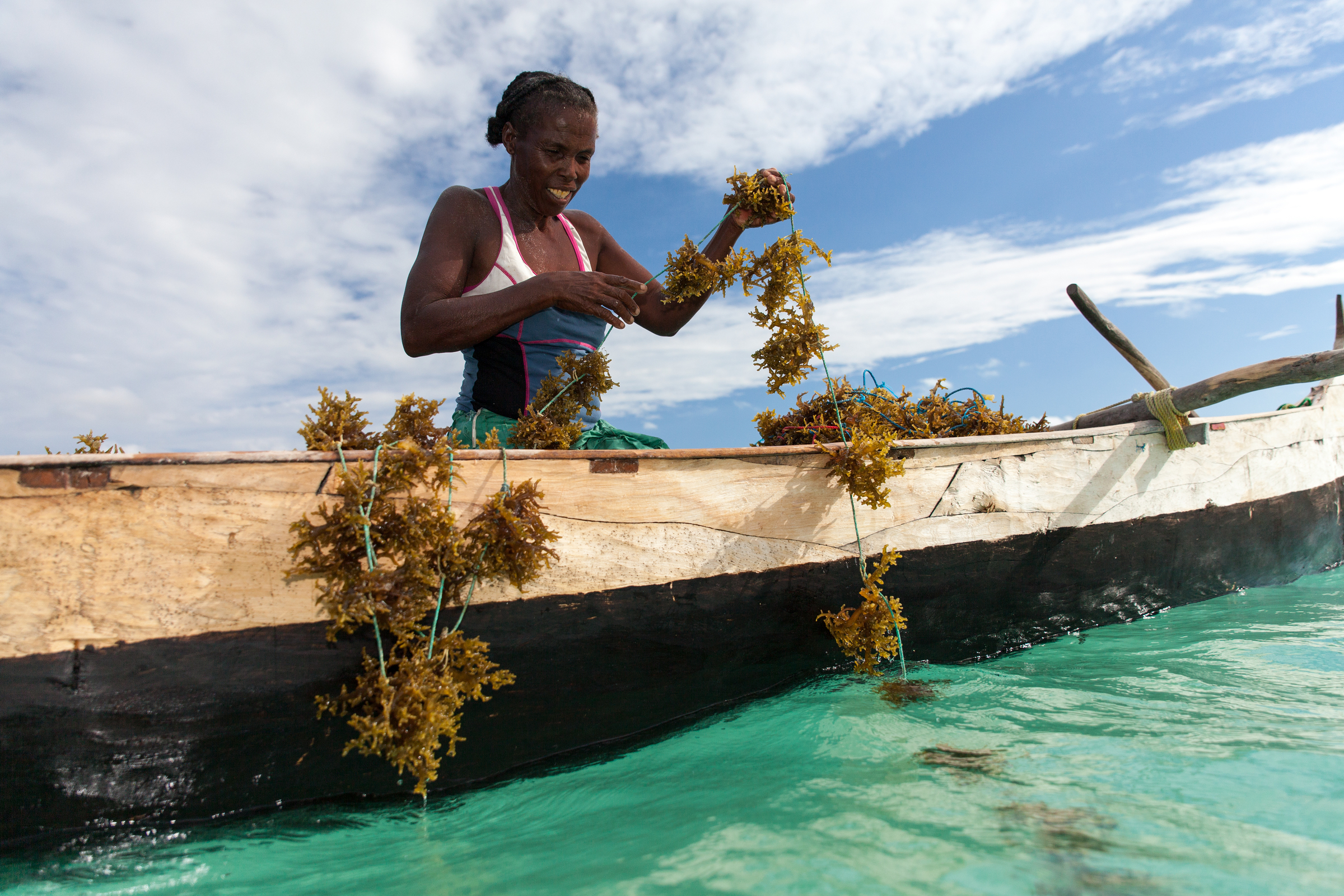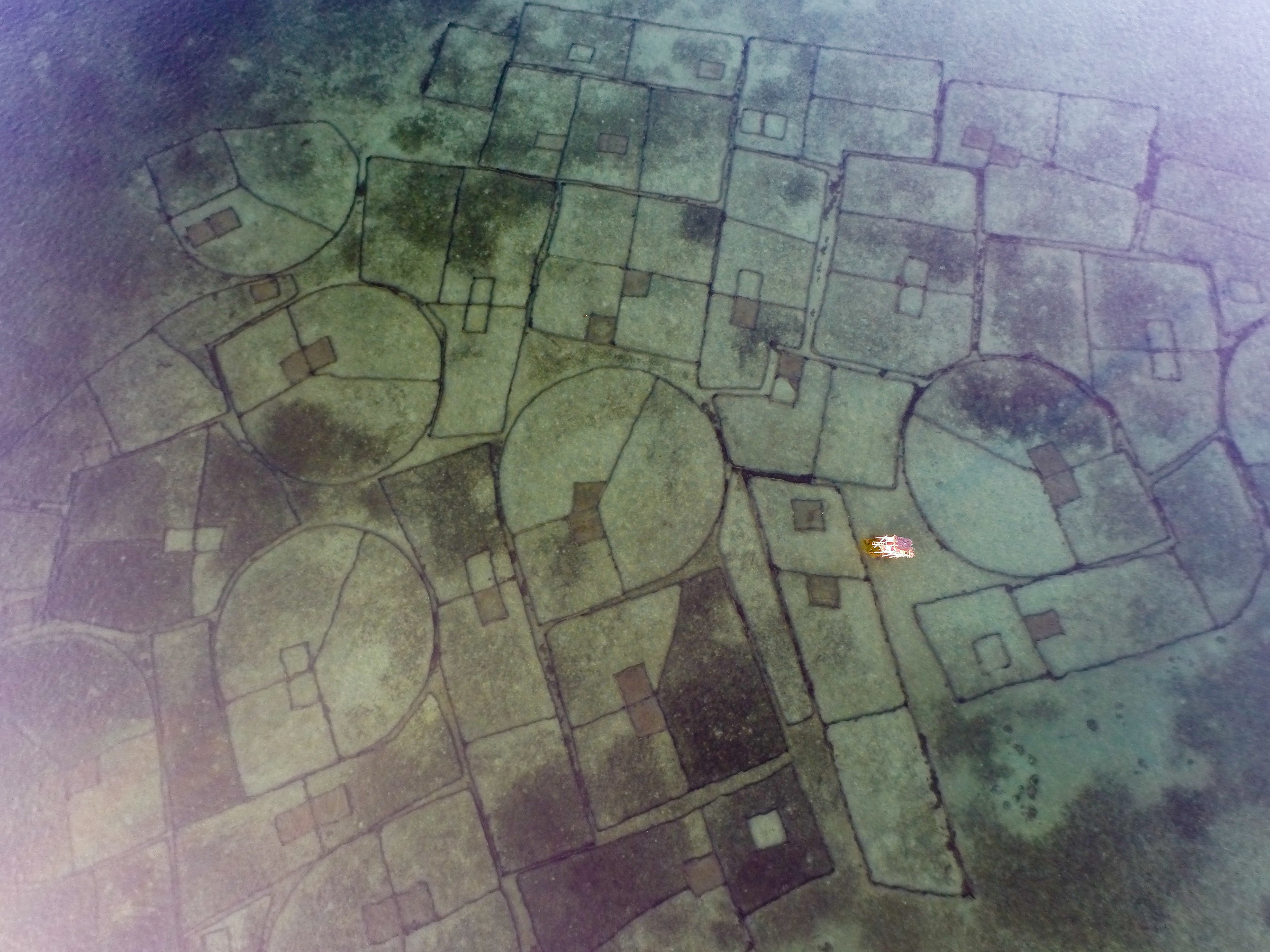Acuicultura comunitaria
Productores de pepinos de mar
Sesión de formación en acuicultura
Granja de pepinos de mar desde el aire
El objetivo de este bloque es proporcionar a los miembros de las comunidades socias de Blue Ventures nuevas fuentes de ingresos, permitiendo un mejor acceso a la alimentación y la educación, al tiempo que se alivia la presión sobre la pesca y la biodiversidad marina.
En colaboración con el Instituto de Ciencias Marinas de la Universidad de Toliara (IHSM), el exportador local de marisco Copefrito y la empresa de acuicultura Indian Ocean Trepang (IOT), Blue Ventures está conectando a las comunidades costeras aisladas de la LMMA de Velondriake con lucrativos mercados internacionales de algas y pepinos de mar, lo que permite a las familias desarrollar sus propios negocios de acuicultura. Los especialistas en acuicultura de Blue Ventures han formado a más de 700 personas para que se conviertan en cultivadores de pepinos de mar (Holothuria scabra) y algas rojas "cottonii" (Kappaphycus alvarezii). En asociación con CITE, una ONG malgache que apoya el desarrollo socioeconómico y empresarial local, también ayudan a fomentar el desarrollo de pequeñas empresas con programas de formación que desarrollan las capacidades técnicas, financieras, de gestión y organizativas que necesitan los pescadores y las mujeres para gestionar sus propias empresas de acuicultura.
Las asociaciones con un instituto de ciencias marinas, un exportador local de marisco y empresas de acuicultura son fundamentales para esta iniciativa. Los cohombros de mar se crían inicialmente en criaderos de la capital regional, y los alevines se trasladan luego a corrales gestionados por la comunidad y crecen hasta alcanzar el tamaño comercial, momento en que pueden recolectarse para su exportación a los mercados asiáticos. Las aportaciones técnicas y la demanda del mercado a las que se accede a través de estos socios del sector privado son cruciales para el funcionamiento de esta iniciativa.
Blue Ventures ha comprobado que este programa comunitario de acuicultura es muy eficaz a la hora de proporcionar a las comunidades nuevas fuentes de ingresos, mejorar el acceso a la alimentación y la educación y aliviar la presión sobre la pesca y la biodiversidad marina. Más de la mitad de los agricultores beneficiados son mujeres, que pueden utilizar sus nuevos ingresos para ayudar a pagar las matrículas escolares de sus hijos y complementar la dieta familiar. Los problemas relacionados con la elevada mortalidad de juveniles de cohombros de mar tras su traslado a recintos lagunares se están resolviendo mediante el sacrificio de cangrejos depredadores y mejoras técnicas en el diseño de los corrales, que han conseguido aumentar la supervivencia del 40% al 77%. La pérdida de cohombros de mar por robo es un reto importante, ya que son muy valiosos para numerosos comerciantes y las poblaciones silvestres están muy sobreexplotadas. Los acuicultores se enfrentan a este problema construyendo torres de vigilancia para controlar los corrales y aplicando un sistema de turnos de vigilancia nocturna.





